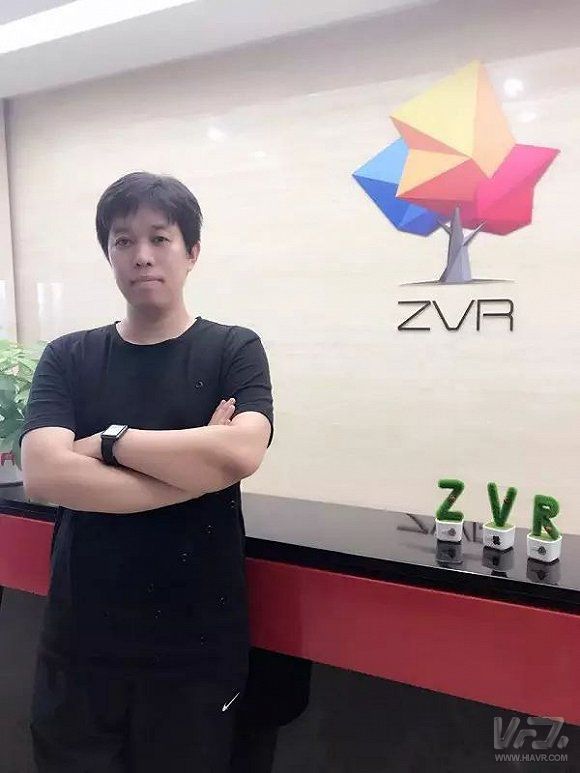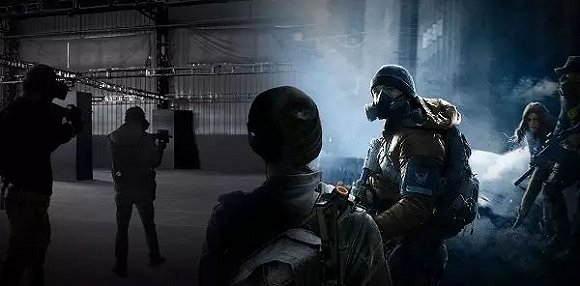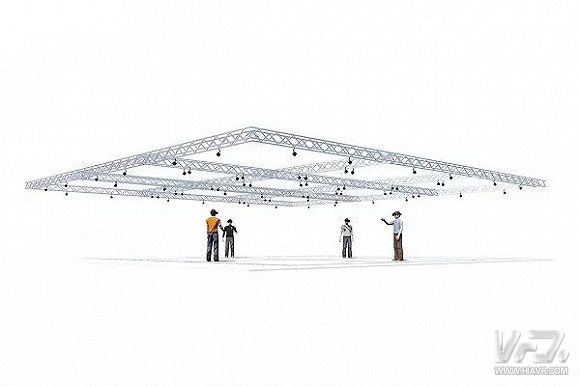“I prefer to study algorithms, like watching movies and playing console games.†The opening remarks of ZVR Founder & CEO Guo Wei are very unique.

As we all know, 2014 was a year when VR really started in China. Unlike all previous movies and games, VR brings audiovisual experience and immersive experience to the experiencer like never before.
“Before I did VR, I was working in the communications and gaming industry on partial algorithms. But since 2014, mobile games have become increasingly limited in terms of channel promotion. It's already difficult to rely on excellent content and gameplay in the industry. In order to win the market, some game players started to find new ways, but this deviated from my original intention of playing games.At this time, I met VR, which made me see a more exciting game world.I think my career appears alternately. This is the year that I founded ZVR."

At that time, VR was still at the earliest stage of development. Whether at home or abroad, the industry lacked clear standards and did not form a complete industrial chain, resulting in a turbulent VR market, riddled with VR products that are not reliable, and experiencing the effects. It is also uneven and the impression given to the user is not very good.
“In my opinion, VR will lead the entertainment wave in the future. However, due to the market chaos, non-compliance VR entertainment experience emerges in an endless stream. We believe that only cutting-edge VR technology can truly connect virtual and reality, and bring brand-new Immersive entertainment experience."
Immersive entertainment dreams and typical scenes need to be realized in three aspects: vision, perception and interaction.As a "technical" CEO who is very concerned about technology research and development and has to knock on codes for more than six hours every day, Guo Wei believes that creating an immersive entertainment experience requires three perspectives - vision, perception and interaction.

Vision is composed of three-dimensional models and related materials. At present, the next-generation game engine on the market can already construct a photo-realistic scene that is close to the real world. Perception refers to the fact that we can feel the game content through sight, hearing, and touch. For example, force feedback, etc.; interaction is the most important, it includes the user's interaction with the scene and other players in the scene.
With the development of the VR industry, VR has become more and more clear in the vertical fields of film and television, games, head displays, controllers, cameras, positioning technology, motion capture technology, and distribution platforms. The efforts of industry players in their respective fields are obvious to all. . But because of this, many VR practitioners are beginning to get confused and which area is best suited to develop in the current VR environment.
Guo Wei said that the current development of the VR industry still faces many problems: the accuracy and delay of the space positioning and motion capture system need to be improved; the peripherals and head-up operation and maintenance management systems used in the commercial VR experience are mostly oriented to the consumer. Form a scalable and commercial total solution for operation and maintenance. To solve these problems, we must first start with infrastructure, which is also an essential part of creating an immersive entertainment experience.
“You can see that vision, perception and interaction are the magic weapon to enhance the sense of immersion in the game. They are great for promoting the entertainment experience. They can bring entertainment to a new height and bring the user a sense of reality. Virtual experience. What ZVR needs to do is to use technology to help content producers create a parallel virtual world for the experiencer from a visual and physical perspective."
Focus on infrastructure R&D and promotion ZVR products and technologiesAt present, ZVR is focusing on the R&D and promotion of infrastructure. There are three main products: the infrared optical motion capture system Goku, VR development middleware, and the VR vehicle Scorpio, which provides six degrees of freedom for interaction.

Compared with similar products in the industry, Wukong can support multi-person motion capture and spatial positioning within a few hundred square meters. Among them, the Goku camera is a high-frame optical infrared motion capture camera, adopts the Outside-In deployment mode, and supports both the active Marker and the passive Marker. It only requires one calibration at a few hundred square meters, and the calibration time does not exceed. 5 minutes.
In addition, Wukong also contains a subset - the starry sky. Guo Wei introduced that the sky is using the Inside-Out deployment method, by positioning a deep infrared camera on the helmet to track the external active Marker for positioning. Compared to Goku, the Starry Sky is more suitable for use with lightweight VR heads such as all-in-ones and mobile heads.
The environment space is a set of tools developed by ZVR for users and CPs. It can open up the mainstream VR peripherals and the two major engines of Unity and UE4. Guo Wei told MKG that the development of the frontier space actually came from a theme park project previously undertaken by ZVR. They want to create a 1:1 scene in a 600-square-meter space and be able to support multiple people at the same time. However, ZVR encountered a great difficulty in the deployment process: they could not directly copy the content product into this scenario. Before each experience, content developers needed to go to the site for debugging, which was extremely labor intensive.
To allow content developers to use their existing content directly, ZVR has developed a frontier space that allows them to adapt their products to different heads-up and spatial positioning systems without repackaging the content. With the development and improvement of tools, the current situation can also provide related services for gestures, joysticks, motion capture, etc. It has become a tool set.
"Through these three products, we have established a very good cooperative relationship with high-quality theme parks, VR cinemas, and VR towns in the industry, providing them with solutions for products and technologies."
Optical motion capture is the best way to increase VR immersion but it requires innovationAfter three years of development, the current VR industry has made great progress compared to 2014. However, it cannot be denied that the domestic VR industry still has not found the best development method, and it is still difficult to get rid of the problems of low level and singleness.

Everyone hopes that in the future when experiencing VR, it is easy to go into battle. It does not require wearing a lot of heavy equipment, and it is possible to carry out multi-person interaction in large scenes. To achieve this, Guo Wei believes that optical technology is the best way.
“In my opinion, optical motion capture is the best way to improve VR immersion, but it needs innovation. There are many domestic optical motion capture technology R&D companies that are mimicking the optical motion capture technologies represented by Optitrack and Vicon. However, Optitrack and Vicon were originally designed to solve traditional motion capture needs such as movies and animations, and are not suitable for all VR scenes."
Today, the VR experience is increasingly different. Industry professionals need to consider not only technical performance, but also need to consider the application of technology in different environments (such as indoor, outdoor, and strong light pollution). In addition, how to achieve rapid replacement of peer-to-peer devices in linear flow, balance between pixel cost and tracking distance, and capture more limb information through as few wearable devices as possible are all needed by industry practitioners. The problem.
“China has excellent algorithms and manufacturing techniques, but lacks excellent design and innovation. ZVR hopes to be able to learn from different scenes while accelerating product landing, so that technology can be perfectly integrated with each different scenario.â€
to sum upVR is not yet a mature industry, and the industrial chain is not sound enough. Compared to hardware and software, everything is focused on one or a few areas. The way in which the industry collaborates and collaborates with each other to create a single line may be the best way for the current VR industry to develop.
For ZVR, doing a good job of technology and product landing, and CP, IP and operators to enhance the experience of entertainment immersive experience is what they are currently doing. It can be expected that when the industry chain is sound, we will usher in a virtual world that is extremely flexible, responsive and good.
Global Lithium-ion Battery Market: Bifurcation
- Based on product, the lithium ion battery market has been categorized into cells/ modules, battery packs, and energy storage systems (ESS).
- On the basis of end-user industry, the global lithium ion battery market is bifurcated into consumer electronics, automotive, and grid energy & industrial.
- In terms of region, the report classifies the market into North America, Europe, Asia Pacific, Middle East & Africa (MEA), and South America. Regions have been analyzed in terms of value and volume shipments in the lithium ion battery market industry. Moreover, region-wise prominent countries covered in the report include the U.S, Canada, Germany, the U.K., France, China, Japan, South Korea, South Africa, GCC, and Brazil.
Global Lithium-ion Battery Market: Rules & Regulations
- As lithium-ion batteries are hazardous material, various regulations regarding the shipment of these batteries have been laid down. The International Air Transport Association (IATA) has set regulations regarding the shipment of lithium-ion batteries in its IATA Dangerous Goods Regulations (DGR).
- Globally, lithium-ion batteries can be shipped as individual cells or group of cells (batteries); batteries/ cell packed with a smartphone or tablet but separated from the electronic equipment and batteries/ cells contained in an equipment.
- Regulations state that, lithium-ion cells and batteries are banned from being transported as cargo or in passenger aircrafts.
- The packaging of lithium-ion batteries must be done in accordance with Packing Instruction (PI) 965. Lithium-ion batteries must be packed in accordance with Section IA or Section IB of PI 965, and must not be packed with the same outer packaging with dangerous goods classified in Class 1 (explosives).
- The packaging of lithium-ion batteries must contain the label [Cargo Aircraft Only," and marked [UN3480." The minimum packaging dimension of packing lithium-ion batteries is 120 mm wide x 110 mm high.
Solar System Batteries,Solar Panel Battery Cost,Enphase Battery Cost,Solar Battery Storage Price
Shenzhen Sunbeam New Energy Co., Ltd , https://www.sunbeambattery.com